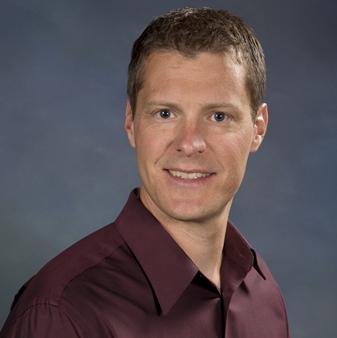Seminar on "Continuum dislocation-density based models for the dynamic shock response of single-crystal and polycrystalline materials"
Events | Mechanical Engineering
Seminar on "Continuum dislocation-density based models for the dynamic shock response of single-crystal and polycrystalline materials"
November 13, 2017 7:30 AM

Speaker
Dr Darby Luscher
Location
ESB 1001
Type
Seminar
The dynamic thermomechanical responses of polycrystalline materials under shock loading are often dominated by the interaction of defects and interfaces. For example, polymer-bonded explosives (PBX) can initiate under weak shock impacts whose energy, if distributed homogeneously throughout the material, translates to temperature increases that are insufficient to drive the rapid chemistry observed. In such cases, heterogeneous thermomechanical interactions at the mesoscale (i.e. between single-crystal and macroscale) lead to the formation of localized hot spots. Within metals, a prescribed deformation associated with a shock wave may be accommodated by crystallographic slip, provided a sufficient population of mobile dislocations is available. However, if the deformation rate is large enough, there may be an insufficient number of freely mobile dislocations. In these cases, additional dislocations may be nucleated, or alternate mechanisms (e.g. twinning, damage) activated in order to accommodate the deformation. Direct numerical simulation at the mesoscale offers insight into these physical processes that can be invaluable to the development of macroscale constitutive theories, if the mesoscale models adequately represent the anisotropic nonlinear thermomechanical response of individual crystals and their interfaces.
This talk will briefly outline a continuum mesoscale modeling framework founded upon local and nonlocal variations of dislocation-density based crystal plasticity theory. The nonlocal theory couples continuum dislocation transport with the local theory. In the latter, dislocation transport is modeled by enforcing dislocation conservation at a slip-system level through the solution of advection-diffusion equations. The configuration of geometrically necessary dislocation density gives rise to a back-stress that inhibits or accentuates the flow of dislocations. Development of the local theory and application to modeling the explosive molecular crystal RDX and polycrystalline PBX will be discussed. The talk will also emphasize recent implementation of the coupled nonlocal model into a 3D shock hydrocode and simulation results for the dynamic response of polycrystalline
copper in two and three dimensions.
D.J. Luscher is a research scientist in the Theoretical Division at Los Alamos National Laboratory (LANL). Luscher joined LANL in the Engineering Sciences and Applications Division as a graduate research assistant in 2000 and then as a member of the technical staff beginning in 2001. During the first five years of his career, Luscher was active in defense related projects serving in various technical roles for the nuclear weapons program. As an engineering analyst, Luscher developed, validated, and applied finite element models of weapon systems to conduct assessments ranging from their thermomechanical response during atmospheric reentry to their assured safety during transportation. With support from LANL’s advanced study program, Luscher returned to graduate studies at Georgia Tech earning a Ph.D. in Mechanical Engineering in the area of constitutive modeling. In 2010, Luscher joined the Theoretical Division where his technical contributions have spanned a broad range within theoretical and computational mechanics. Luscher’s current research interests reside in the area of constitutive theory development for materials in extreme dynamic environments with an emphasis on mesoscale models for the shock response of metals and explosives. Luscher is most passionate about developing physically-sound connections between a material’s microstructural and macroscale responses making use of mesoscale simulation and experiment